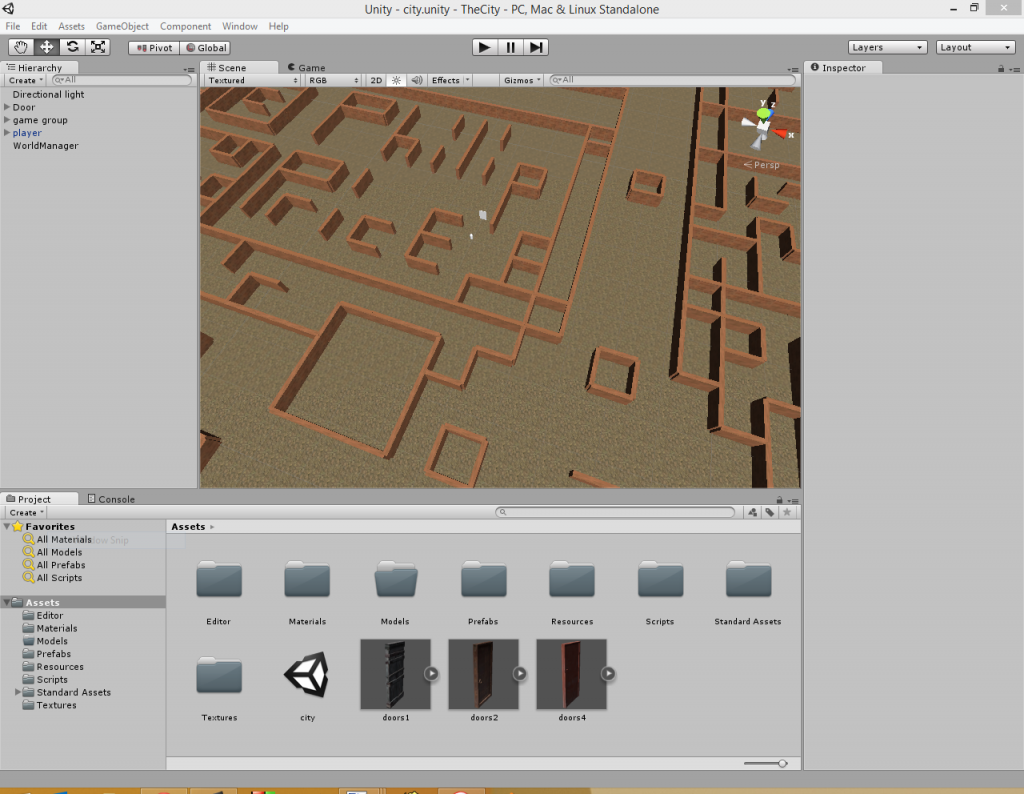 |
| Overlooking the City now with 3D walls |
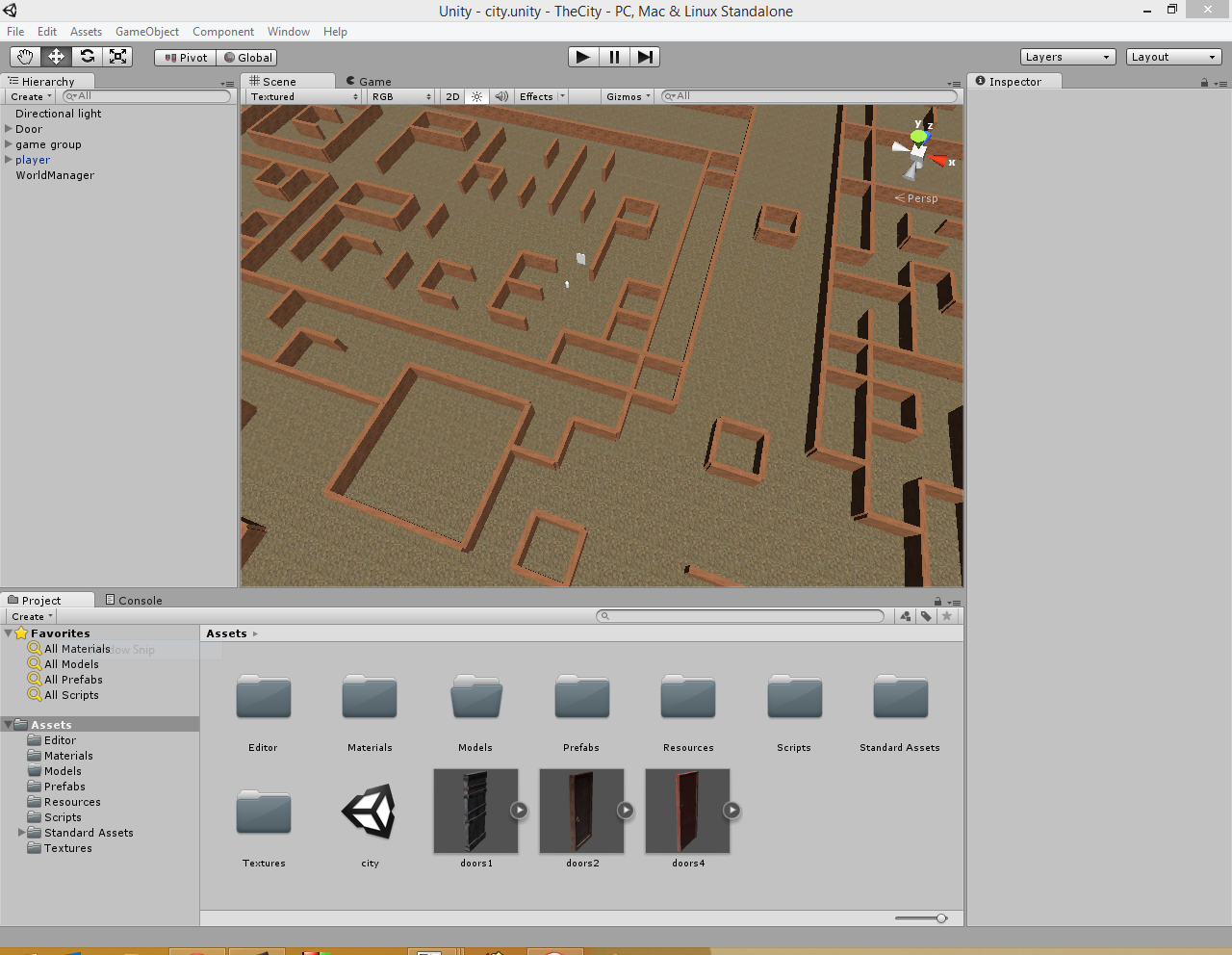

 |
| Overlooking the City now with 3D walls |

Here are a handful of new screenshots showing The City of Xebec’s Demise rendered in full 3D using the Unity game development system. I’m surprised how cool it is to move around with total 360 degree freedom. I think that using Unity has really opened up a whole new world of possibilities for the game. Hope you enjoy these shots and will support this new direction for the game.
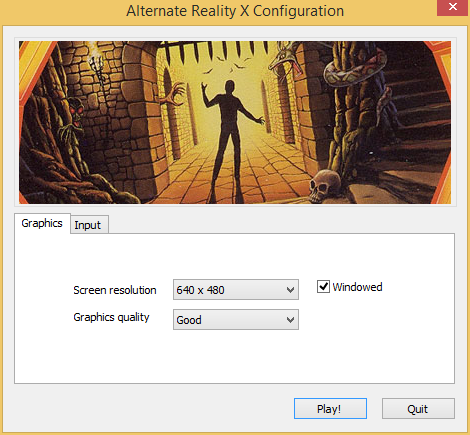
I feel I’m long overdue on a blog update for CRPG Dev, Alternate Reality X and Stone of the Citadel as there have been a few important changes and decisions.
The biggest change is that I have now switched to Unity 3D for developing both Alternate Reality X and Stone of the Citadel. For those unfamiliar with Unity it is a game development system which allows you to create 3D (and more recently 2D) games across multiple platforms such as Windows, Mac OS X and mobile devices. It’s very popular, powerful but relatively easy to use, has a big online community offering help and advice and has a handy asset store where you can access for free or buy models and code for use in your games. The version I’m using is free, though there is a commercial version and add ons for higher end users or teams.
I feel I’ve gone as far as I can with my current C++ and SFML based code. There are a lot of bugs to fix and some serious architectural problems behind the scenes relating to how objects are represented. A lot of my code will be relatively straightforward to move over to Unity though. SFML’s use of OpenGL has been a constant difficulty for some players as they have struggled to get compliant OpenGL drivers on their systems – Windows & Mac OS X. Unity builds in my experience just seem to work. On reflection the work to port my current ARX to Mac OS X last month was a lot more painful and time consuming that I believe it should have been. Unity allows you to build for Mac with a few extra mouse clicks in the “Build Settings” 🙂
 |
| Configuration screen for the new Alternate Reality X |
I’ve started work on the introductory sequence for Alternate Reality using the free version of Unity and you can check out my work so far using the link below and the Unity Web Player:
www.crpgdev.com/unity/ARXWeb.html
I’ve converted the old custom map format to a well known, common format and Patrick has kindly provided me with some Unity code / framework that converts the map data into a usable Unity scene. There are some omissions in the scene just now but these should be fairly straightforward to sort out. Lots of work to do with the map(s) from here but this is a really big help in getting started. Thanks again to Patrick for this.
 |
| My work in progress for the intro using the Web Player |
Lots of people have suggested I should do a Kickstarter for my games but I don’t think it would be the right sort of platform for me given my personal circumstances. I feel Patreon provides a very good alternative where you can build up an active, interactive community around multiple projects and interests (games in my case) and provide support and feedback in a more manageable way to suit people’s budget. You don’t have to pledge any money to support CRPG Dev on Patreon if you don’t want to or aren’t able to so it would still be great to hear from you there. The CRPG Dev Patreon site is here:
I’ve also signed up for Twitter so I’ll probably be making use of that shortly as an alternative way to post updates and other news. The ARX forums have been updated recently and look a lot nicer to use but I haven’t had a chance to dig into these yet and customise them.
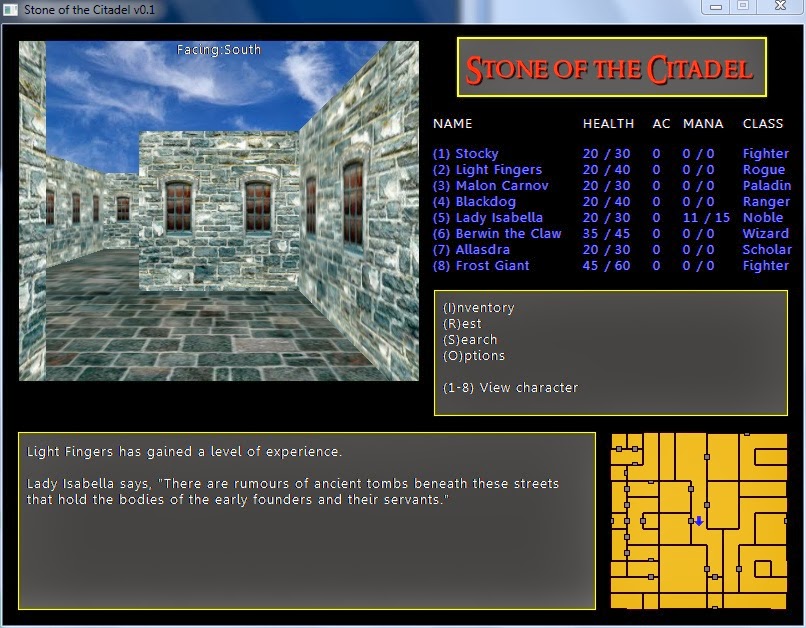
 |
| Stone of the Citadel – Back in 2012! |
I originally started working on Stone of the Citadel back in 2012, originally using the Simple and Fast Multimedia Library (SFML) which I had used (and still use) for Alternate Reality X. I wanted to create a party based CRPG which brought together what I considered the best features and experience from the classic CRPGs of the 1980s and 1990s. For me that’s the Ultima series, Might and Magic, The Bard’s Tale, the SSI games including Eye of the Beholder and of course Alternate Reality. In addition there are many other games which I’ve played or been intrigued about over the years where I thought good ideas didn’t achieve their potential.
I can’t really hope to compete graphically with the big games of today and if I’m honest I don’t really wish to – we’re well catered for in the first person, single player Elder Scrolls type category. That’s not to say that presentation and graphics aren’t important to me. I will be putting a lot of effort into the appearance of the game to make the 3D view as attractive as possible and have all the relevant information easily accessible.
So what can you expect from Stone of the Citadel?
Firstly it will be made using Unity 3D. The reasons for this are many but the main ones include its powerful features, excellent cross platform support (including iOS and Android) and a rich community with lots of tutorials, videos and helpful information. It’s fairly easy to use and has a big asset store of code, 3D models and other add-ons which you can add to your project. It’s also been used by for many games including high profile kickstarters like Wasteland 2 and Shroud of the Avatar so we can see how capable it is. I’ve spent enough time using it now to be comfortable that it can do everything I would want for my projects (and lots more than I won’t use) and it will allow me to easily create the type of 3D and 2D views that I need for my games. It will do away with the problems I’ve had with OpenGL and video drivers as it seems to work fine on every machine and device I’ve tried.
The game itself will allow you to create a party of 1 to 8 adventurers to explo. A back story will be generated for each character you create or you can create your own to provide extra customisation for your characters. Whilst there will be a notional class or profession, most characters would be able to attempt most actions, wield most weapons etc but would require focussed effort and training in order to be effective in that area.
Map wise I will be using a grid based system similar to that used in games such as Eye of the Beholder and Might & Magic 3 and to some degree Ultima IV. This is different to the format used in say Alternate Reality where each position on the map has 4 outward facing walls, sometimes resulting in paper thin looking walls. This map format also allows me more flexibility in regards to the automap and making use of an Ultima style tile view should there be a requirement for that in some stages or areas. I think it will be the best fit for the type of levels I’m looking to make with SOTC and within Unity 3D. This doesn’t however mean that the 3D view will just be walls made from square blocks 🙂 Whilst the map structure and layout are unlikely to change during the game, expect the map to be always active with events, encounters and items. Some of these will be heavily randomised so that it always feels like there is a lot going on in each area rather than a map area that can be “cleaned out” and then feels barren and empty.
 |
| Example of the EOB map style (from www.gamewinners.com) |
The game will begin in a City with further areas outside the City becoming accessible as you progress through the game and develop your characters. Some characters and monsters in the game will move around the environments independently of your actions so you will sometimes encounter the same characters or opponents at different points of the game, creating the feeling of a real living and breathing world. Characters will respond to your party as individual characters (based on their unique characteristics) rather than using a single, stock response. Characters will have a lot of detail for you to develop (if you want to).
I’m now working on the first demo and framework code within Unity 3D. My first task is to complete my initial building blocks (some simple textured walls and doors) and build up a sample City map for exploration. More details and screenshots coming soon.
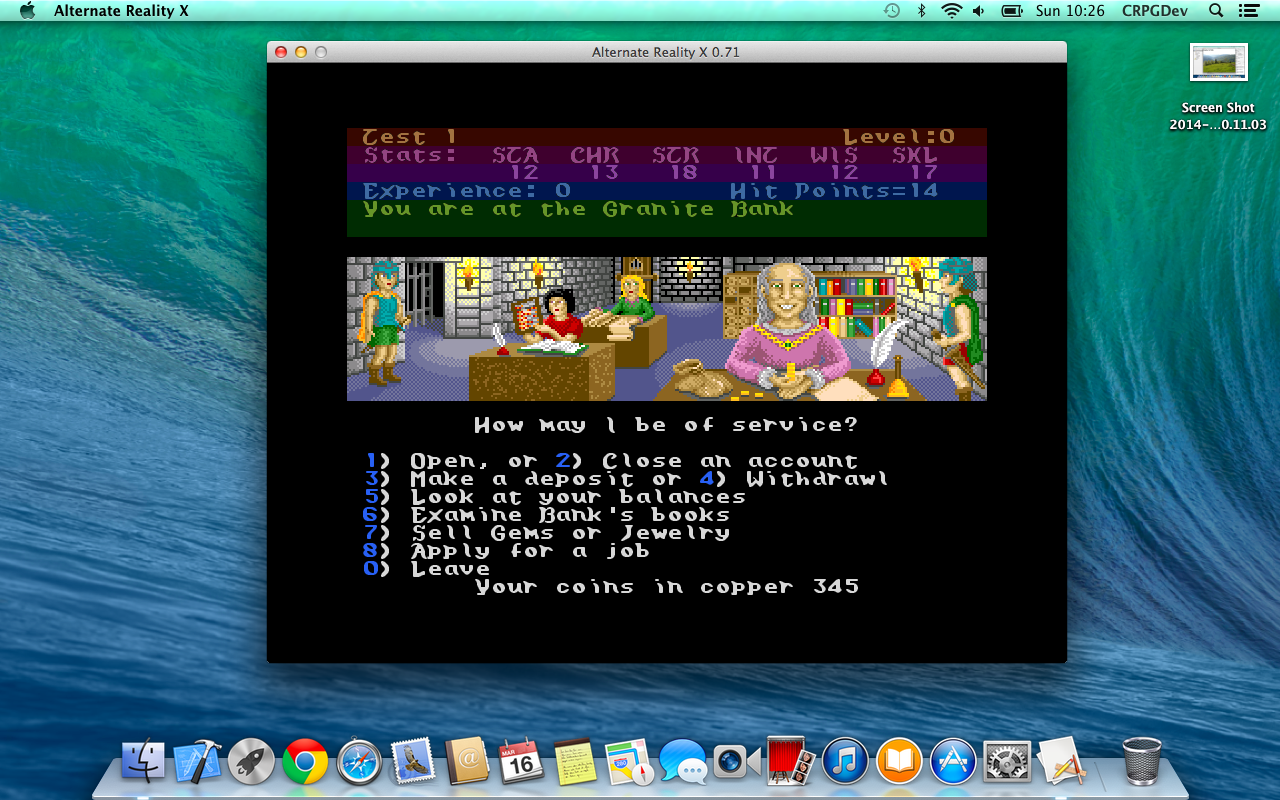
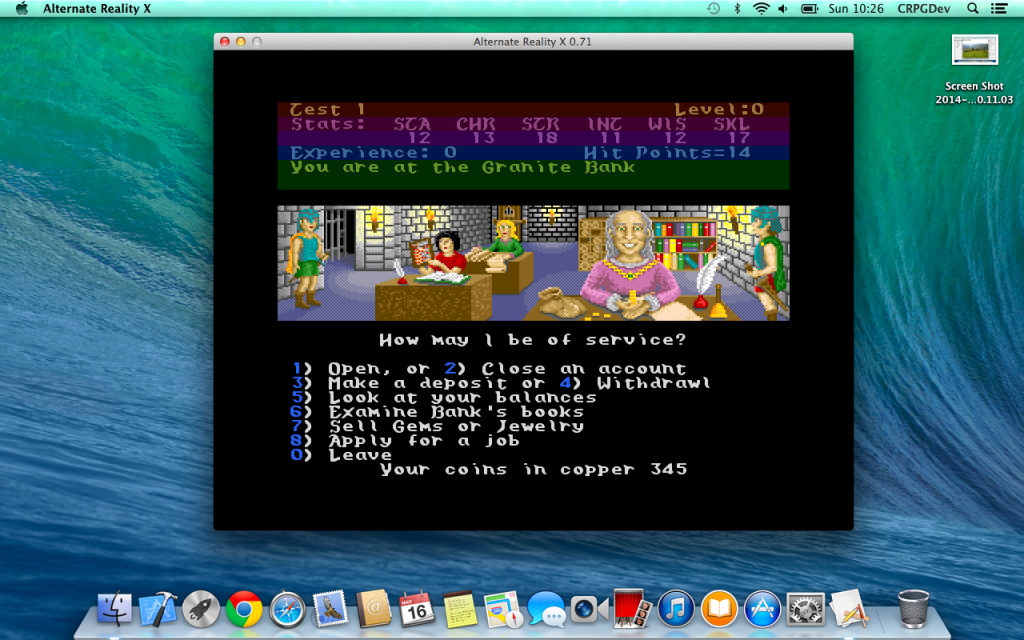 |
| Alternate Reality X 0.71 running on Mac OS X! |
Alternate Reality X 0.71 is now available for download from www.crpgdev.com. I spent a lot of time (about 50 hours sandwiched in around work and family commitments) on this one modifying and tidying up a lot of the display code in the background so that ARX runs much more consistently across different window and screen sizes. I’ve also modified the encounter art scaling code so that encounters in both the original Atari 8 bit style and using Ted’s new art scale properly based on the 3D window size. Another area which annoyed me was the positioning of screen elements when visiting shops and modules. These should now appear neatly centred on the screen or window rather than spread out to the four edges of the screen as previously which I didn’t think worked very well. Hopefully these changes were positive! This release also includes a couple of new encounter images from Ted – a Slime and a Noblewoman (who wasn’t in the original AR).
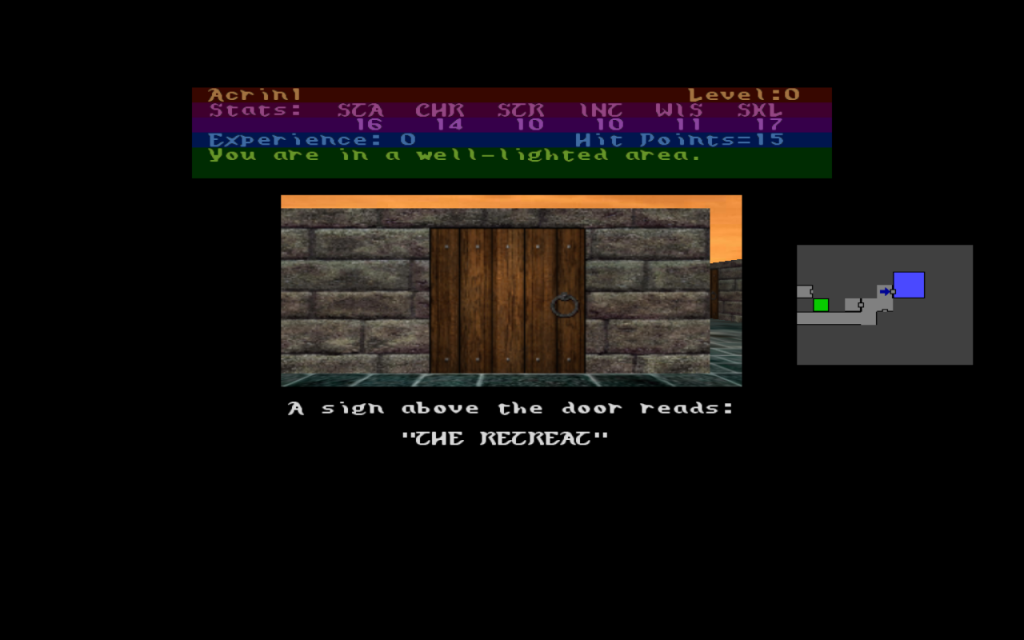 |
| Mac OS X version running full screen |
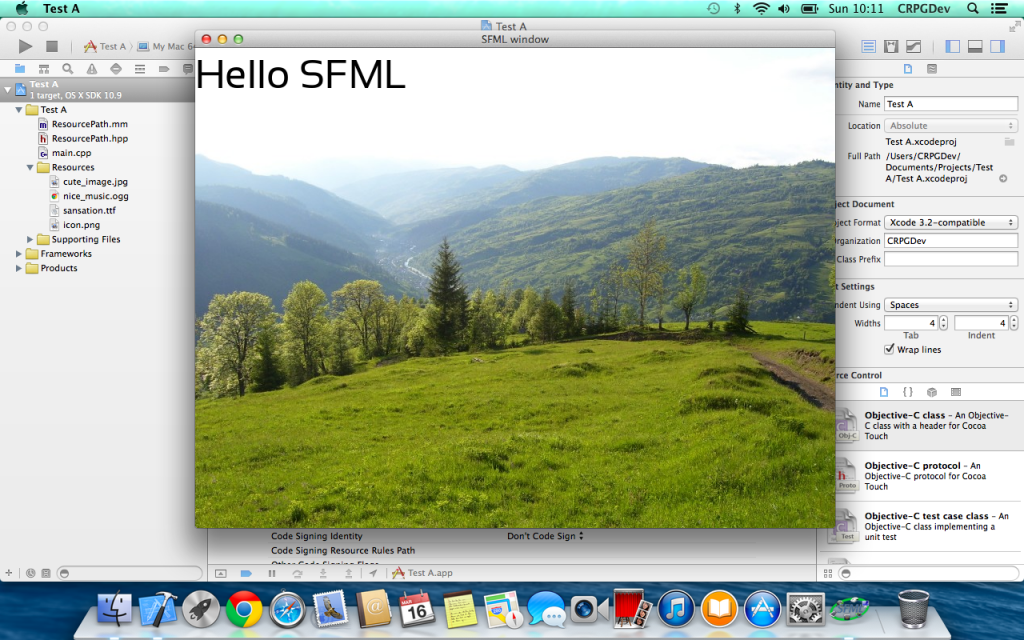 |
| The SFML 2.1 template and test project |

I’ve been very busy over the last few weeks with family and work activities which hasn’t left much time for game development but I’ve been busy planning the next update to Alternate Reality X and carrying out research for my own original game.
I’m still getting up to speed with Unity and have been inspired by reading some interesting articles from my two favourite blogs – The CRPG Addict and Tales of the Rampant Coyote.
One of my long time issues with game development is the classic problem of trying to create something which is beyond my abilities, too time consuming or too epic in scope. I was interested to hear over on Matt Chat that Richard Garriott of Ultima fame wrote over 20 smaller RPGs before he wrote Akalabeth. This game Akalabeth in turn became the basis for Ultima I.
The gave me the idea of writing a very small game in a short space of time to help me get up to speed on Unity 3D. It also gives me a completed game project and a personal confidence boost. The intention is to wrap this up in say 24 hours of development time maximum. It’s not practical for me to do the 24 hours straight so this will be a couple of hours at a time. For what I have in mind this should be feasible. I spent about an hour yesterday and came up with the example room below which I was happy with.
 |
| Exploring a room in the old castle |
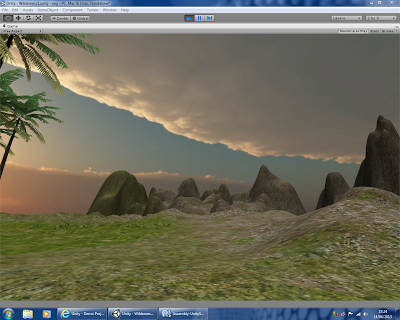
I’ve just got home after being away for over a week so I’ve not done any further work on Alternate Reality X during that time. However I spent a few hours today familiaring myself with the basics of the free version of the Unity game development system and I’m pleased with the results so far. On first use it seems like a very powerful system to use.
 |
| Exploring the Wilderness in my first Unity 3D effort? |
I’ve tried out Unity before but have never really sat down with a clear objective in mind and tried to learn some of the basics. I’m reading Beginning 3D Game Development with Unity by Sue Blackman and so far I’ve managed to put together a few scenes and have my character move around in a full 3D environment. After creating some simple terrain using the built in tools and then adding mountains, hills and clearings I was able to add my character and walk around the landscape I’d just created. I have to say I enjoyed the moment where I climbed to the top of a clearing and a series of mountains loomed into my view.
 |
| My map from above and players view in the game window |
I also played around a bit with creating the user interface and found some nice free assets on the Unity web site for creating menus, text and buttons. I’ve also been researching how Unity would work for more traditional 3D Dungeons and walls such as those in but without the limitations or visual restrictions that my current system has. From my research and the contents of the book it seems that people have used Unity to create all sorts of games from role playing games, first person shooters to 2D point and click adventures.
The next thing I’m keen to try is converting one of the City or Dungeon maps into a Unity scene with a few nice extras which I would have struggled to implement. I’m excited by the possibilities but I won’t rush into making any decisions just yet.
Let me know what you think.